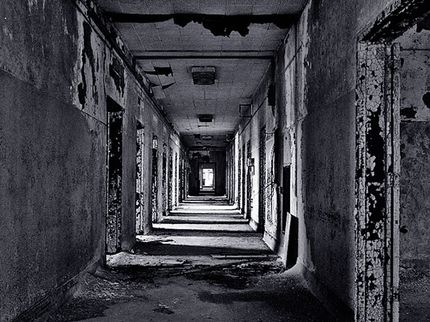Central State Hospital is more than a lone abandoned insane asylum—it is a veritable ghost town, once consisting of nearly 200 structures spread across 2,000 acres outside of Milledgeville, Georgia.
Before the Civil War, the state of Georgia found itself with a surplus of unwanted and abandoned citizens. It opened the “Lunatic, Idiot, and Epileptic Asylum” in 1842. Over the next 100 years, Milledgeville’s lunatic asylum became one of the largest in the country, with over 13,000 patients at its population peak. Many of these patients never left the facility—as evidenced by the 2,000 grave markers at nearby Cedar Lane Cemetery that memorialize the 25,000 souls buried across the hospital grounds.

In the South, Central State Hospital was a place to be feared. Parents often warned children to behave lest they be hauled off to Milledgeville. Sadly, as with many mental health facilities of the era, the practices at Central State were crude and misguided; many of its patients showed symptoms that did not warrant institutionalization.
Related: 5 INSANE ASYLUMS AND THE HORRORS THAT HAPPENED THERE
Doctors at Central State used numerous brutal treatments, including lobotomies, insulin shock therapy, and electro-convulsive therapy without sedation. Other procedures included isolation therapy, ice-cold baths, and, if all else failed, straitjackets. A 1959 investigation published by the Atlantic Constitution concluded that just 48 doctors cared for the thousands of patients at Central State, and not one was a licensed psychiatrist. In fact, some staff members had originally been patients that were hired right out of the institution.

- Photo Credit: David Scaglione / Flickr
Thanks to advancements in psychiatric care, Central State began its decline in the 1970s. Jimmy Carter, then the governor of Georgia, led the fight in transferring many of Central’s patients to newer hospitals and more suitable community clinics. The institution officially closed in 2010, though a few administrative buildings remained in operation. The majority of the once-stately Central State, however, now lies in abandonment.
Related: THE FORESAKEN HALLS OF ENGLAND’S SEVERALLS HOSPITAL
Milledgeville was a bustling city in its heyday. The mighty Oconee River brought a constant stream of boat traffic; during the Civil War the city served as the capital of Georgia. Today, it’s a sleepy village with charming shops that attracts visitors to Anadalusia Farm, the preserved home of writer Flannery O’Connor. O’Connor is buried in Milledgeville’s Memory Hill Cemetery, which is a stone’s throw from Central State.

- Photo Credit: David Scaglione / Flickr
In fact, Flannery was reason I visited Milledgeville with my family several years ago. As we pulled out of Memory Hill, trying to find the road back to the highway, we passed a large driveway, surrounded by big, beautiful buildings. I enquired as to what it was. My mother, born and raised in Georgia, responded, “Oh, that’s Central State.”
Related: INVESTIGATING THE MORGUE AT WAVERLY HILLS SANATORIUM
We were mere miles away from downtown. Yet the cheerful energy of Main Street Milledgeville seemed a world away from the eerie silence of Central State. Most of the buildings were boarded up. Had I been alone, I might have slipped inside. Instead we simply stared, surrounded by the ruins.




[via Atlanta Magazine; Atlanta Journal-Constitution; The Morbid Sightseer; OnlyInYourState.com; The Moonlit Road]
Photo of grave markers via Wikimedia Commons; All other photos by David Scaglione / Flickr [CC]
